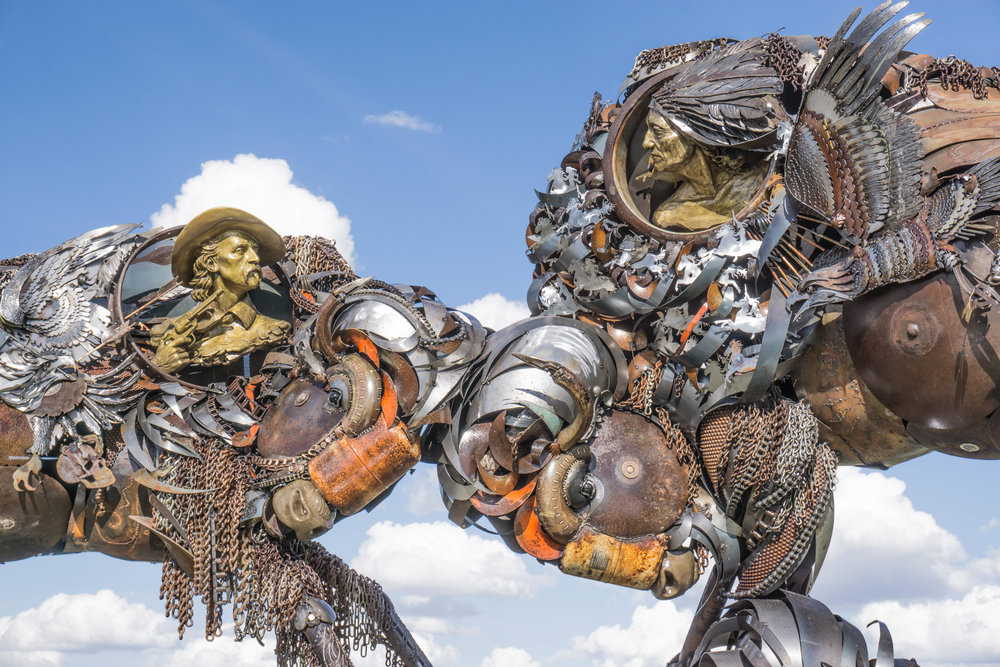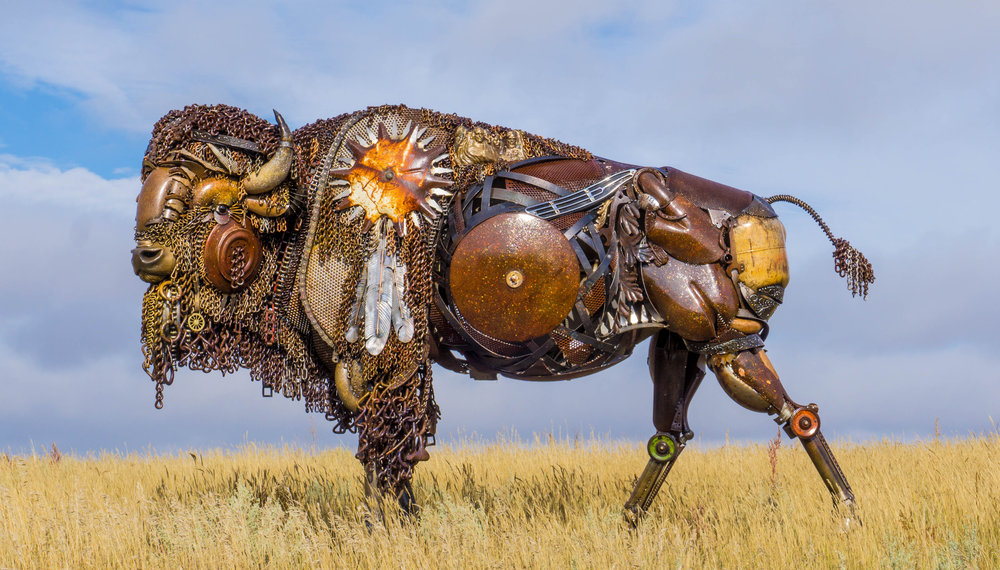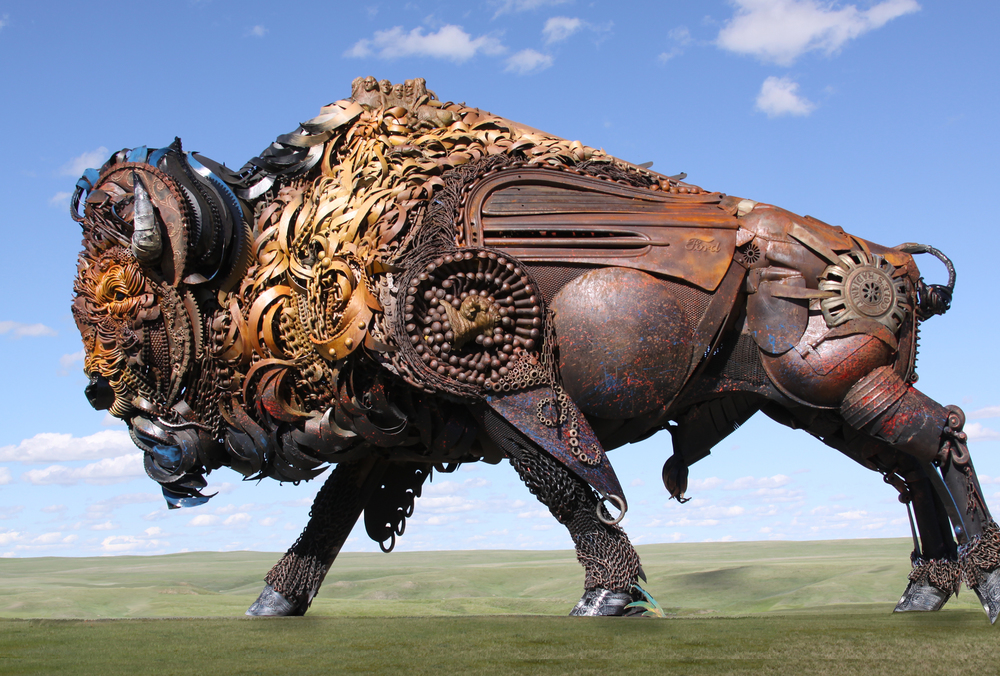The Buffalo Collection Public Sculpture Filled with History and Elegance
In the American West buffalo ran wild, composing herds of thousands, before greatly declining in numbers due to westward expansion. They were an integral part of the native people’s diet and a regal figure that dotted the plains. In order to realize the public sculptures in The Buffalo Collection, John Lopez was inspired by this history that is tied to the land he grew up on, the Grand River region of South Dakota.
“A lot of times I’ll get my ideas for sculptures from something I see on the ranch.”
The herds of buffalo may be smaller nowadays, yet the animal still awes with its extraordinary size and stoicism, enough to motivate Lopez to devote a whole series to the subject. When considering the somber history of the great mammal and the great changes that time can inflict upon a place, one can almost interpret a glint of sadness when looking in a buffalo’s eye. Of course we bring our own interpretations to the table, but the same can be said when viewing the memorable public sculptures of John Lopez, who evokes history even from within the materials themselves.

Within The Buffalo Collection, Last Stand is perhaps the most directly related to history, as it represents a specific event, the Battle of the Little Big Horn. On the shoulders of each figure there are cast bronze busts of both General Custer and Crazy Horse. This inclusion of previously made bronze sculpture is why the work of Lopez is described as hybrid metal art. Another great example of this is the life-size French Buffalo, which will soon be installed in a zoo in France. The international appeal of The Buffalo Collection is understandable, everyone who sees the public sculptures says that they are as unique as they are filled with pure beauty. Describing his work on Dakotah, Lopez states:
“An exciting, artistic adrenaline high carried me through workdays that stampeded into weeks, months, and eventually resulted in one ton’s worth of draped chains, curls of sheet metal, sickle guards, and hunks of cable-wire ‘hair.’”
His passion and the true joy he feels expressing himself through his art reflects in his work. He cares about the story behind the materials he repurposes. Scrap metal is not just trash in his point of view, instead it is a symbol of time, the perfect way for him to convey the slowly changing face of the South Dakota prairies.

In art, one can only plan so much. Even the most technically trained artists often happen upon new strategies or methods by chance. For John Lopez, allowing for a bit of improvisation is key to letting the materials speak for themselves and find their own voice.
“I can’t plan too much. I’ve got to be open to letting the materials go where they will. I think that’s what’s so fun about sculpting; you never know what you’re going to get.”

On one hand, The Buffalo Collection presents life-size, anatomically correct, and realistic portraits of the noble creatures. However, the way in which they are crafted is so unique that they stir the imagination. Where and when did these machine parts come from? What buildings and farms did they help create? A valuable legacy is preserved through the transformation from scrap metal to public sculpture. One that is accessible for all ages and walks of life to enjoy.

